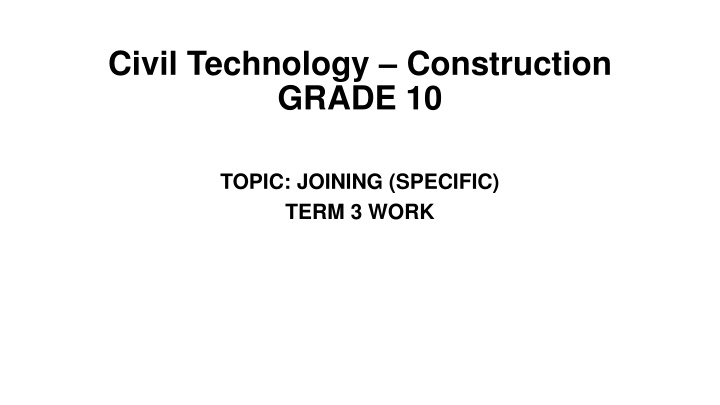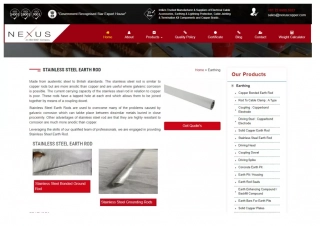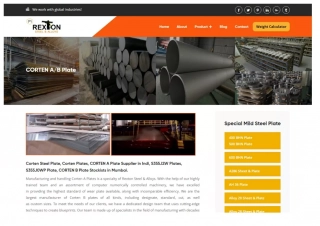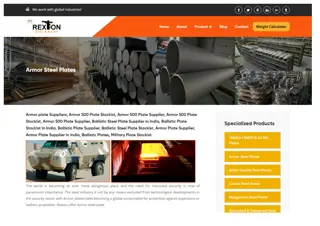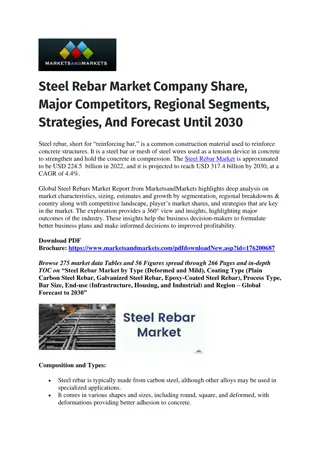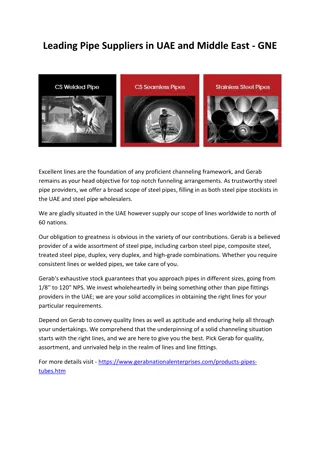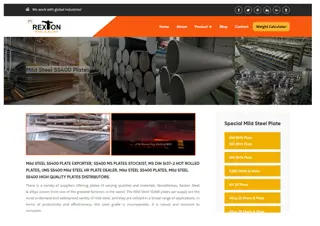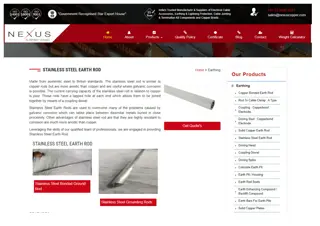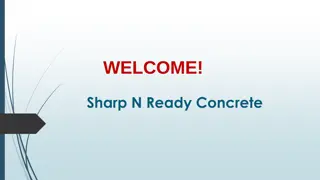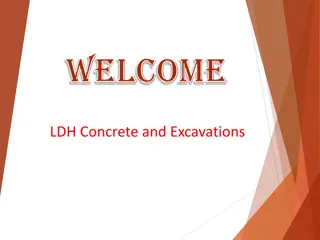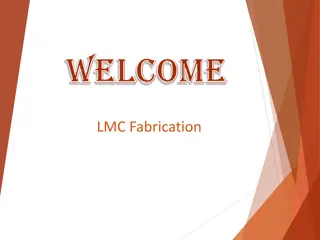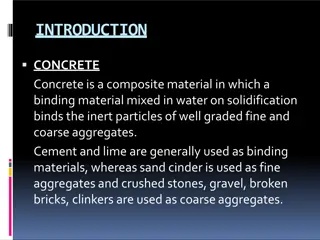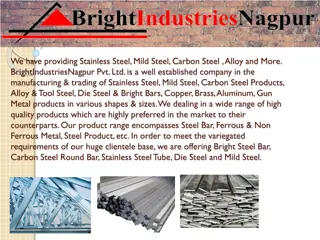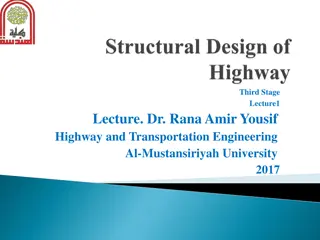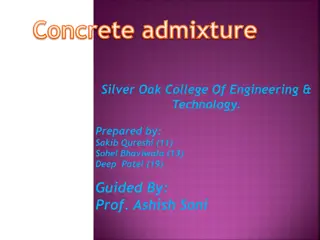Methods of Joining Steel and Concrete in Construction
Connections between steel and concrete in construction projects require special consideration due to differences in material properties. Techniques like using bolts, shims, grouting, and resin anchors are employed to create strong and stable connections that distribute stresses effectively. Each connection type, such as between column bases and foundations or slabs/walls, has its specific requirements to ensure structural integrity.
Download Presentation

Please find below an Image/Link to download the presentation.
The content on the website is provided AS IS for your information and personal use only. It may not be sold, licensed, or shared on other websites without obtaining consent from the author.If you encounter any issues during the download, it is possible that the publisher has removed the file from their server.
You are allowed to download the files provided on this website for personal or commercial use, subject to the condition that they are used lawfully. All files are the property of their respective owners.
The content on the website is provided AS IS for your information and personal use only. It may not be sold, licensed, or shared on other websites without obtaining consent from the author.
E N D
Presentation Transcript
Civil Technology Construction GRADE 10 TOPIC: JOINING (SPECIFIC) TERM 3 WORK
TOPIC: JOINING (SPECIFIC) CONTENT: Methods of joining the following items: 1.1 Steel to concrete 1.2 Wood to concrete 1.3 Existing concrete to fresh concrete
1.1 STEEL TO CONCRETE Connections between steel and concrete must account for differences in strength and accuracy between the two materials. Connections between steel and concrete are fundamentally different from normal steelwork connections for a number of reasons: 1/10 to 1/15 of those for steel. The accuracy with which in-situ concrete can be formed is much less than for factory fabricated steel. Concrete has negligible tensile strength, and so any tensile forces applied to a concrete element must usually be carried back into the reinforcement. Safe working stresses in concrete are typically in the order
STEEL TO CONCRETE: The connection between a column base and concrete foundation is detailed to distribute the stresses in the concrete and provide adjustment on site for inevitable inaccuracies. A very common column base connection involves casting holding down bolts into the concrete foundation. The concrete base is poured under typical site conditions, and a high degree of precision is unrealistic. After the concrete has hardened, the top level of the base can be checked, and shims placed so that when the column is erected, it will be placed at the correct level. The bolt boxes allow the bolts to be adjusted sideways to fit into the holes in the base plate.
STEEL TO CONCRETE: The bolts serve to locate the column and provide some stability until the frame is braced. They may also be required to resist uplift or bending of the column base, if the building design requires this. Once the column position has been checked, the space under the base plate can be grouted, and the base plate can then distribute the high stresses in the steel section over a large area of concrete in bending. Tensile or shear forces in steel-concrete connections can be accommodated by using expanding bolts or resin anchor bolts.
STEEL TO CONCRETE: A different type of connection occurs when tension or shear is to be applied to a concrete slab or wall. Expanding bolts can be used to transfer loads into concrete. These bolts have to work at lower stresses and be at much larger centres and edge distances than bolts for connecting steel. Such connections can therefore become very complicated. If fire resistance is not a problem, resin anchors can be used as an alternative to expanding bolts.
STEEL TO CONCRETE: Headed Concrete Anchors are available for welding to flat surfaces, inside angles, and outside angles. Each of these applications requires the proper style stud and ferrule, so please specify your application when doing.
1.2 WOOD TO CONCRETE The common solution was a hardened nail, or a wood plug with a screw driven in the center. Light duty: (Plastic anchors) They're great for fastening shelf brackets, towel bars, rake and shovel brackets, shower doors, pipe and conduit retainers, and most anything else light (Hammer-set anchors) The best feature of hammer-set anchors is that they're quick to install. You don't have nuts and washers to fuss with; just drill the hole to the right depth and hammer it home. Hold your wood or other material in position and drill through it into the concrete to the correct depth. Slip in the anchor. To finish the job, strike the exposed pin with the hammer and drive it in.
WOOD TO CONCRETE: (Sleeve anchors) The sleeves pinch the sides of the predrilled hole and get tighter as you tighten the screw or bolt. Medium-duty: ( Concrete screws) Drill the special-size pilot hole (see package for exact bit size) and drive the concrete screw's super-hard, large profile threads into the concrete with a power screwdriver. The beauty of this fastener is that if the piece needs to be removed, you can just back the screw out. They're available in hex or Phillips drive heads.
WOOD TO CONCRETE: Heavy-duty: (Sleeve anchors) Perfect for anchoring heavy, weight-bearing framing members such as deck ledger boards. Drill right through the wood and into the concrete with a masonry bit and hammer drill. Use a depth stop to get the correct depth and then blow the dust out of the hole with a turkey baster (don't use your breath, because the dust will blow back in your face). Push the anchor into the hole and tighten the nut and washer to wedge the backside of the fastener against the concrete. (Wedge anchors) These are extremely strong anchors for attaching framing members to solid concrete. Drill a hole the size of the anchor through the wood and into the concrete. Thread the nut on a few turns and tap it into place with
1.3 EXISTING CONCRETE TO FRESH CONCRETE Surface preparation Contaminants, such as oil, grease, tar, asphalt, paint, wax, curing compounds and surface impregnates, such as linseed oil, should be removed, so should dust, laitance and weak or loose concrete. When bonding to asphalt, the surface should be roughened so that clean aggregate is exposed. Do not apply epoxy adhesives in the rain or in the presence of standing water.
Two methods of surface preparation in order of their preference are: A. Mechanical: 1. 2. 3. 4. 5. Removal of surface by grinding Sandblasting Heavy mechanical scarification (for example, by Tennant machine). Chipping Roto-milling B. Chemical: Acid etching with 15% by weight hydrochloric acid solution followed by thorough flushing with a high pressure stream of water.
EXISTING CONCRETE TO FRESH CONCRETE The use of epoxy adhesives will allow feather edging of the concrete mix for areas other than joints, edges or corners. A preferred edge should be 1/4" minimum in thickness. The edges of the deteriorated area should be saw cut to eliminate edge spalling. As an alternate, the sides of the spall should be chipped as steeply as possible. Cut well back into sound concrete. ChemCo Systems epoxy adhesives for bonding new concrete to existing surfaces may be applied and distributed by broom, brush, roller, notched trowel, squeegee or spray gun depending upon the nature of the surface, the size of the area, and the scheduling of the concrete placement.
CAUTION: Where the bond coat has lost its tack but not become hard, a second coat of epoxy must be applied immediately prior to placement of concrete. Should the epoxy have cured hard, the first coat must be roughened with a wire brush, abrasive wheel or preferably light sandblasting and a second coat of epoxy applied prior to concrete placement. Fresh epoxy will not bond to unroughened cured epoxy. Tack free or cured epoxy will not provide a structural bond to fresh PCC.
